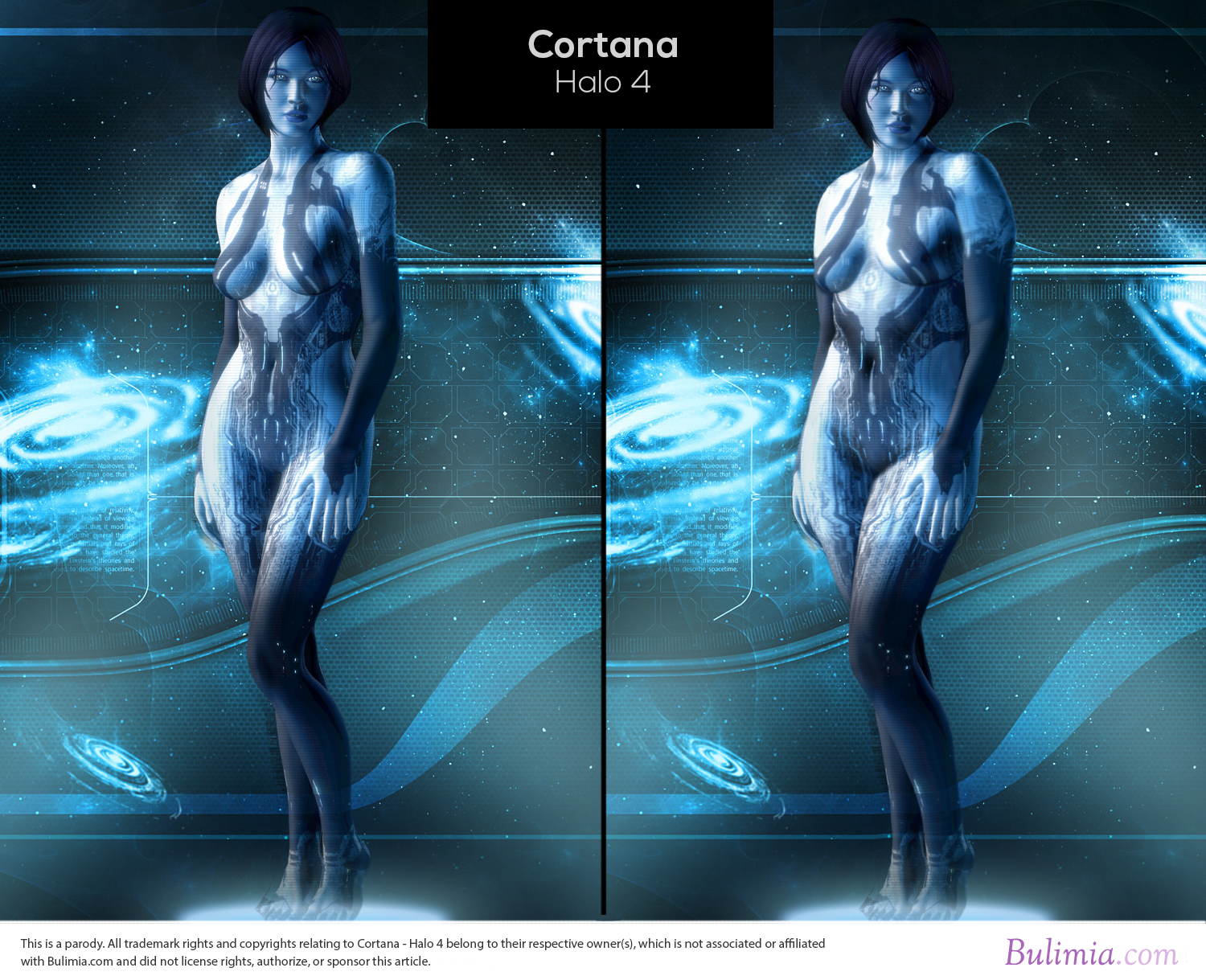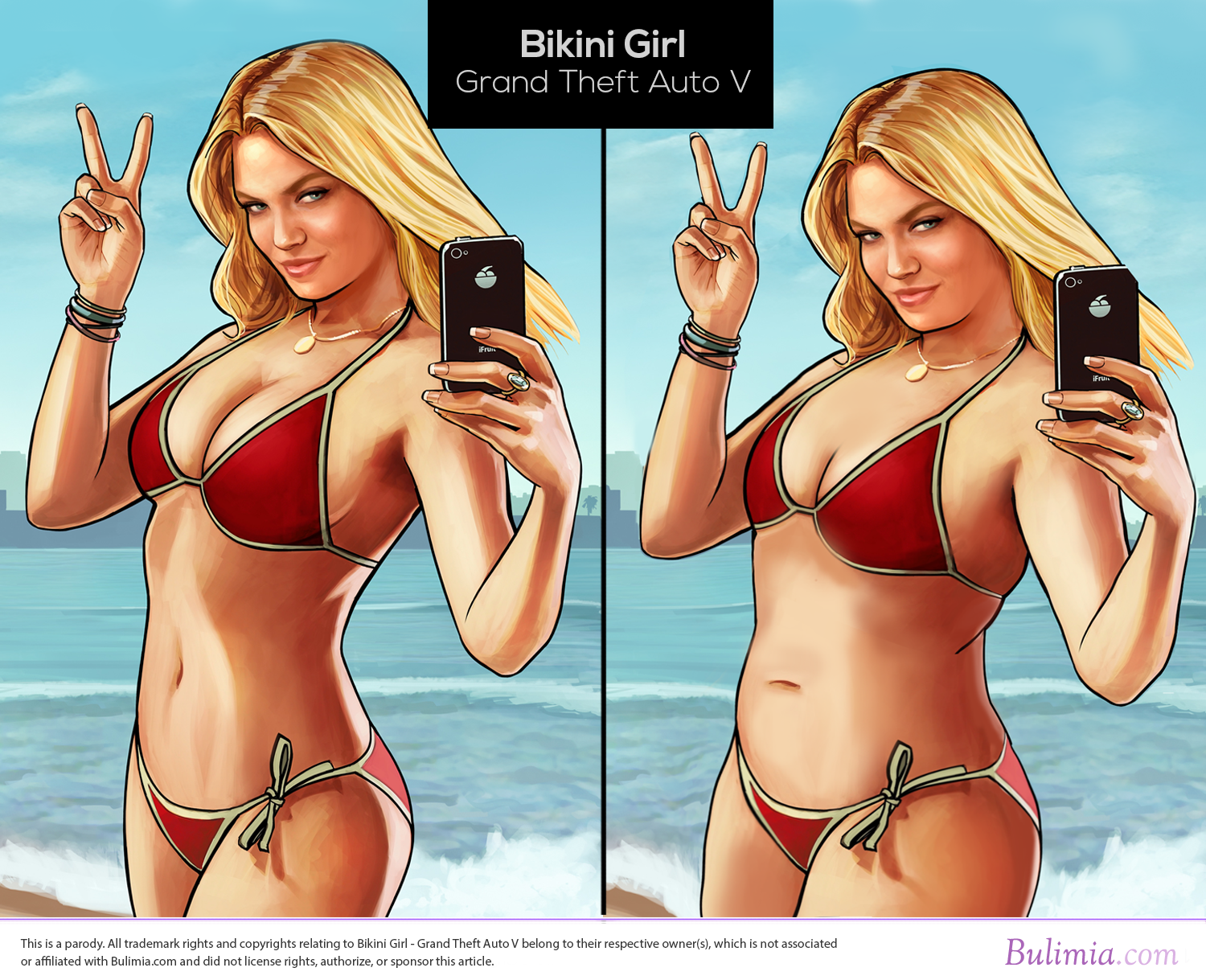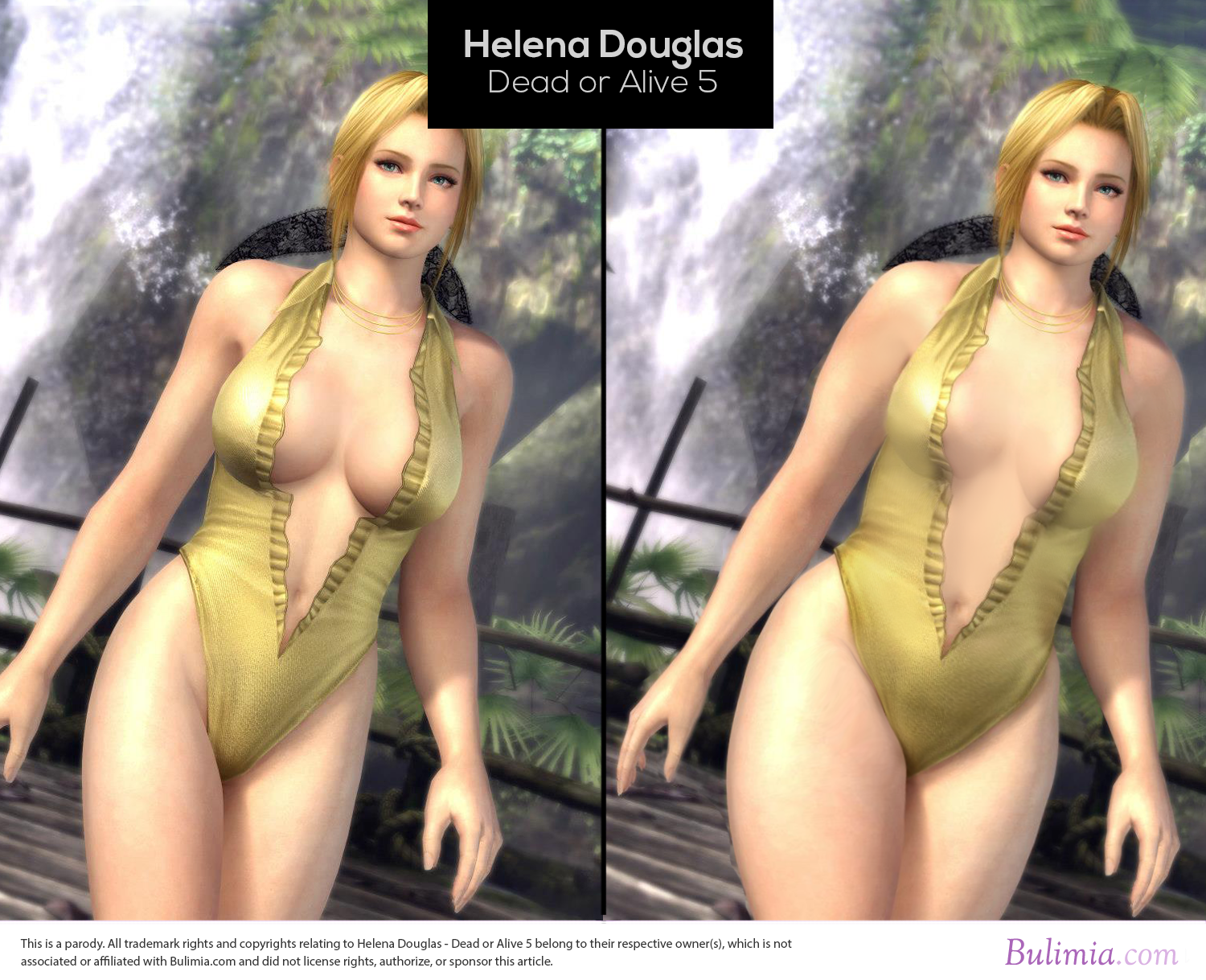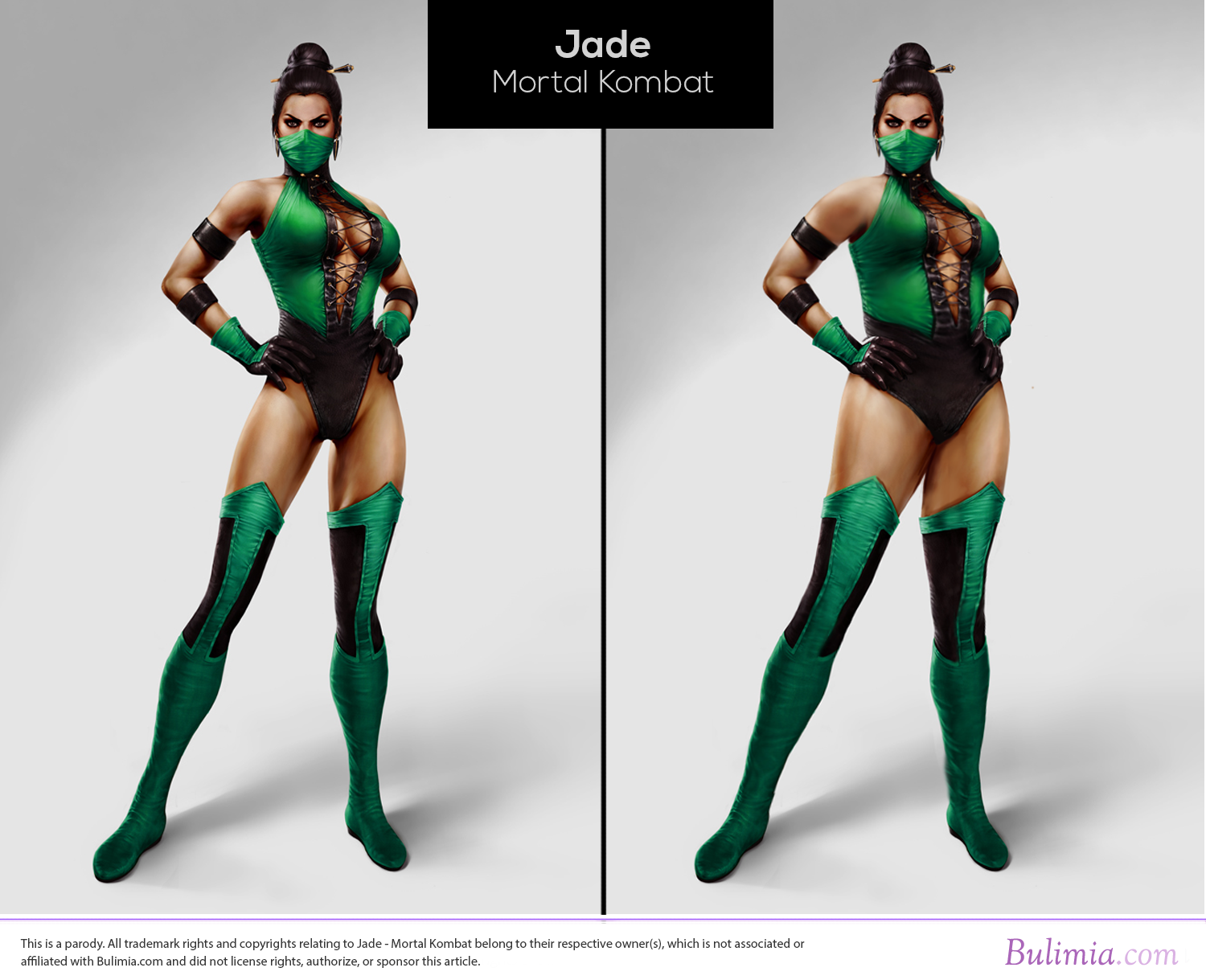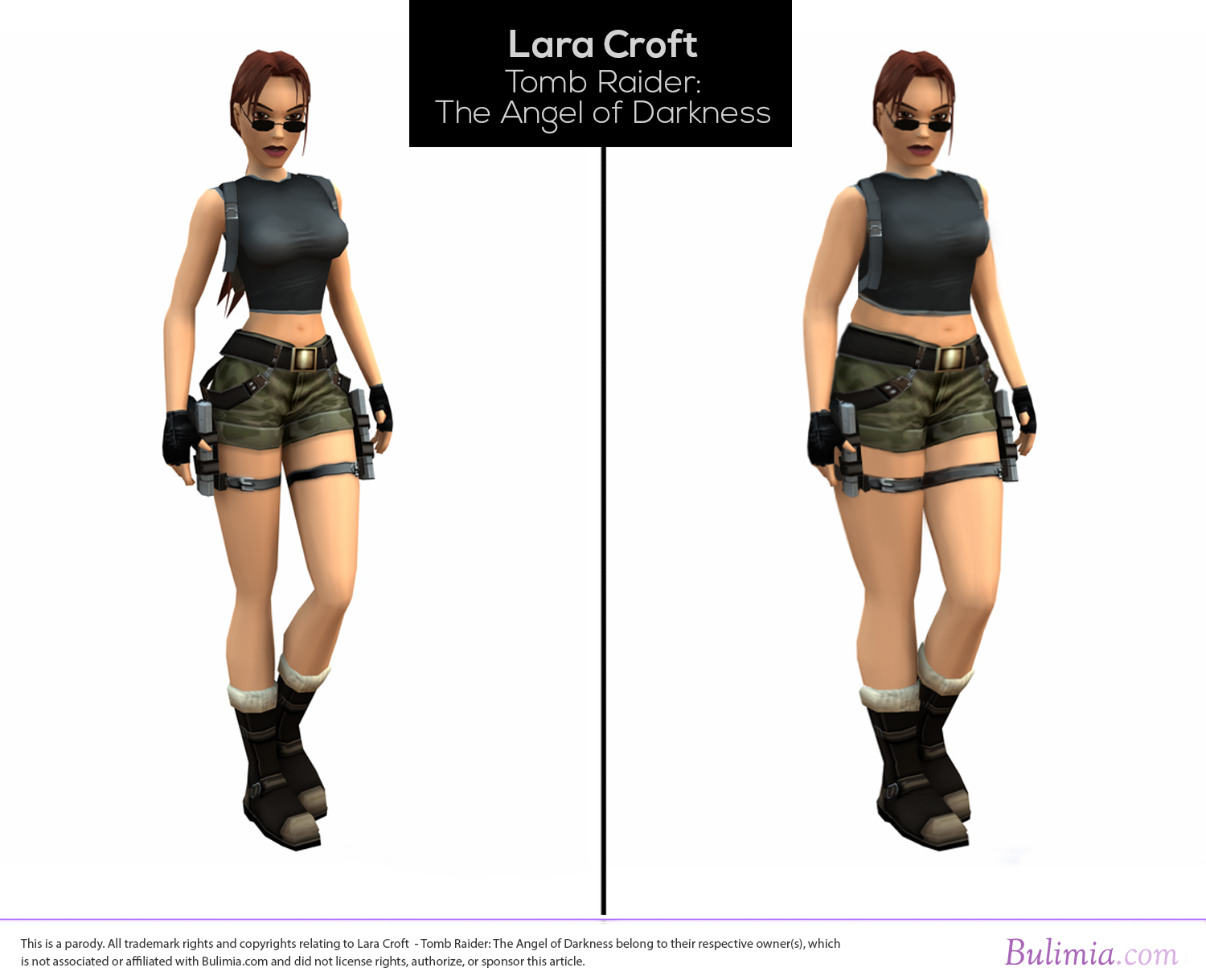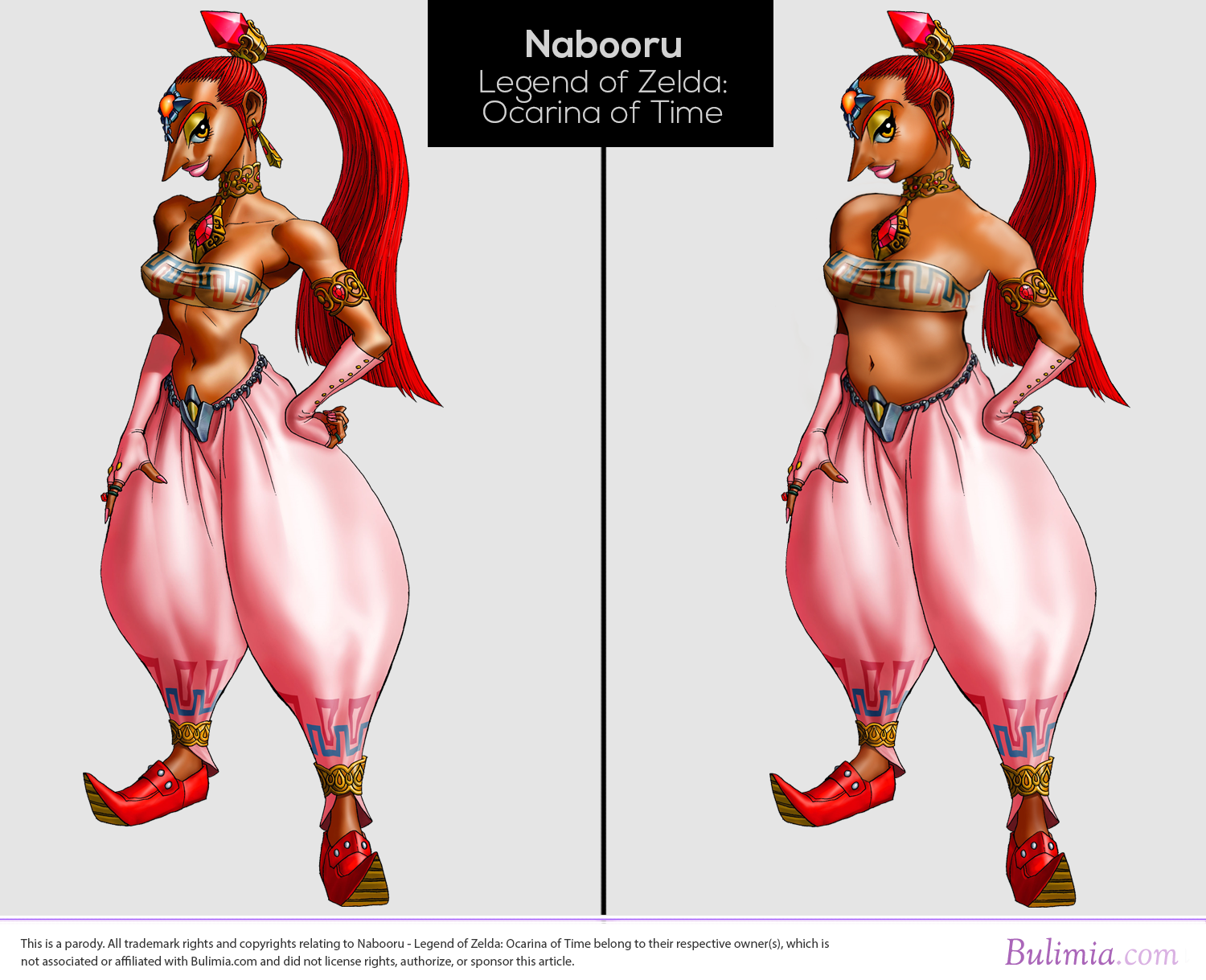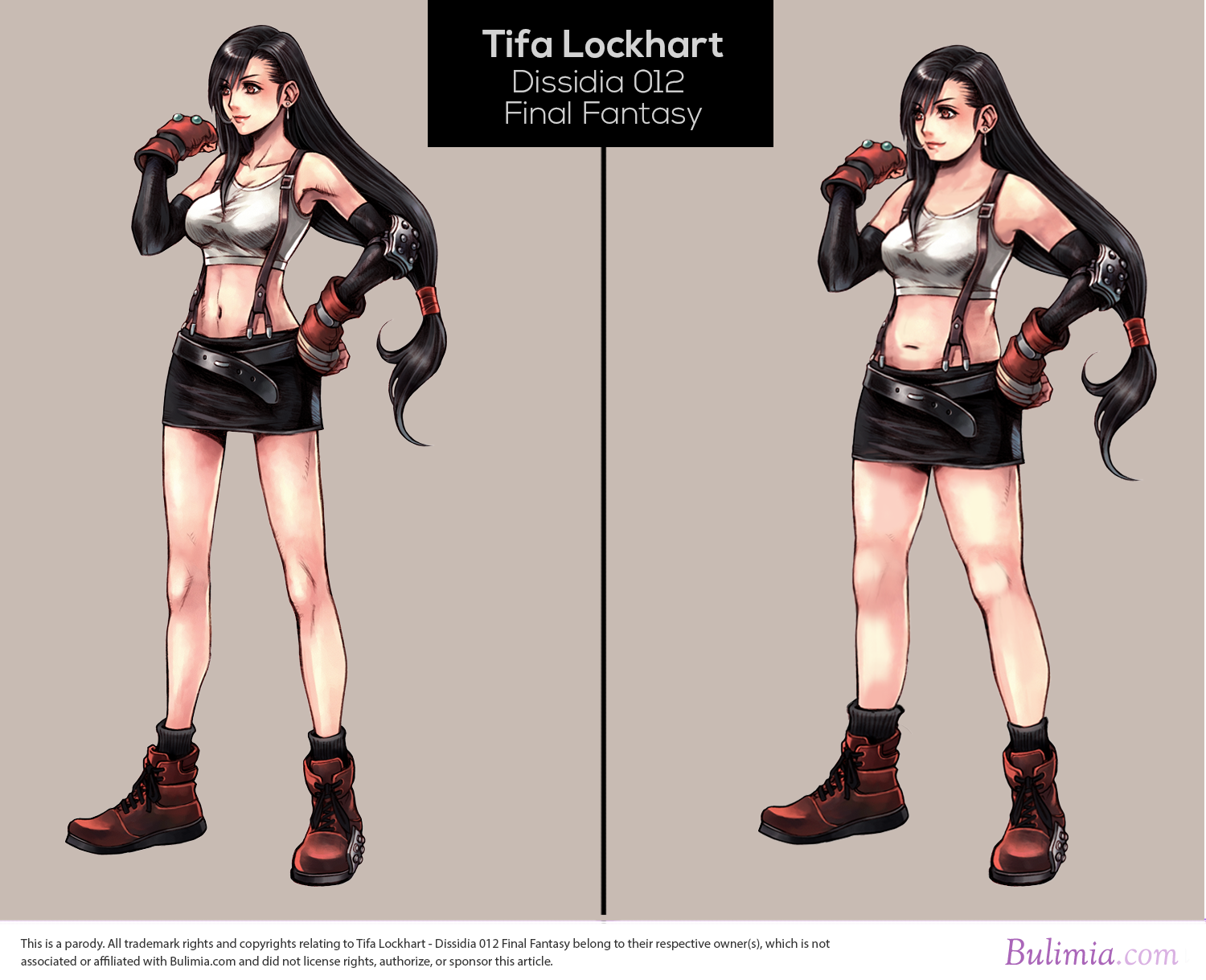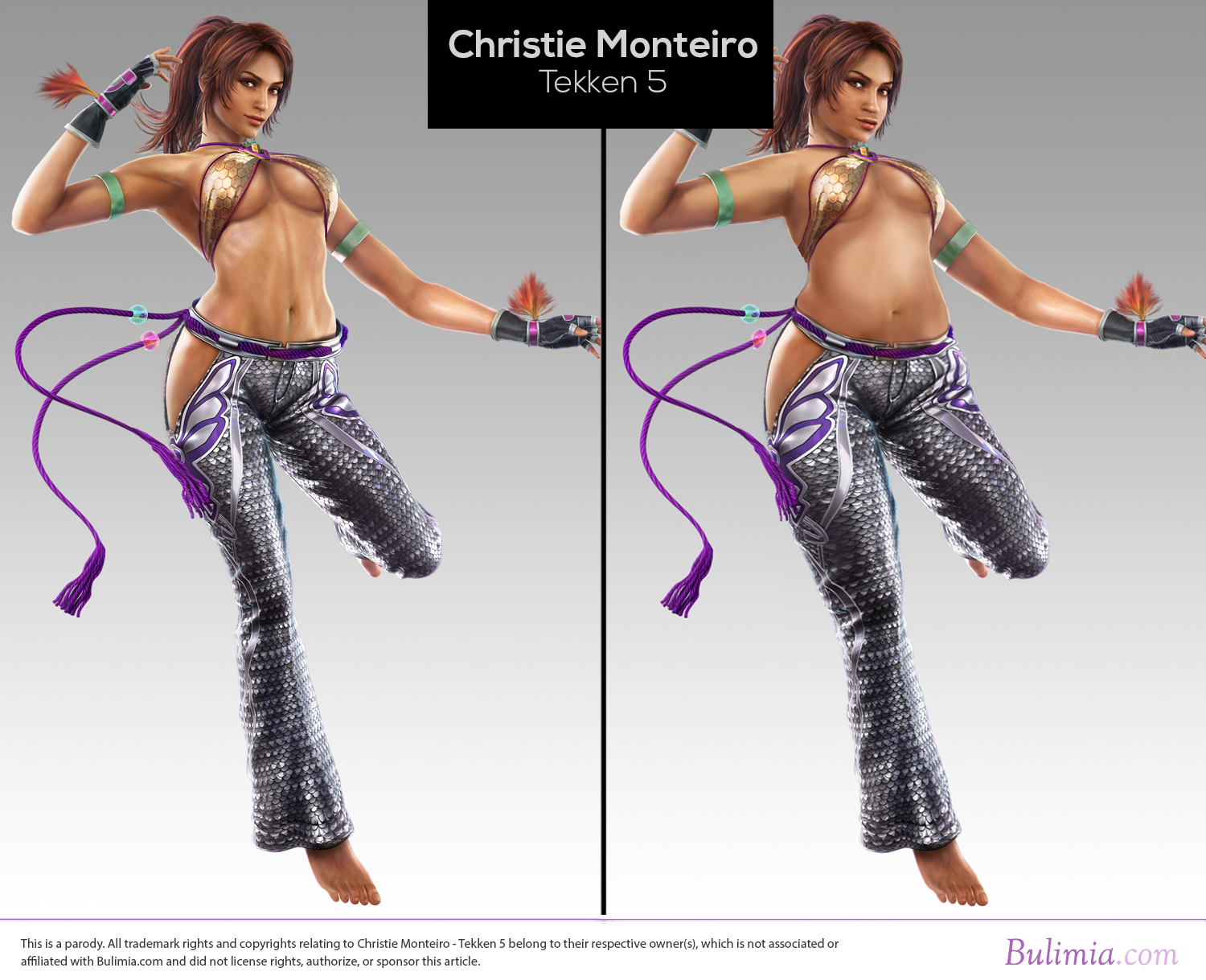Ever since Bulimia.com released their re-imagined takes on female video game characters, there has been a great deal of debate as to whether or not the redone bodies actually were more “realistic” as stated. From the original explanation for the project:
Some gaming studios boast their hyper-realistic lighting techniques, touting natural cloud movements as the latest features of their games. And with that kind of attention to detail, it makes us wonder, why can’t they accurately portray the female body?
For example, plus-sized women are a rarity in video games, and when one does show up, she’s typically unusual looking. More often it seems video games are home to ultra-slim waistlines only.
If video game creators are going to pride themselves on accurate digital representations, then it’s time for them to get real about women.
With realism in mind, we altered some of the most beloved female video game characters with Adobe Photoshop, shaping their bodies into images that represent the average American woman’s measurements.
Some, like Jess Joho, writing for KillScreen, have praised the changed bodies for their presentation of average American body types while preserving the characters’ uniqueness. “Instead of just highlighting what the industry gets wrong about the female body, however, the recreations also emphasize exactly what they get right, demonstrating how each character–regardless of proportion—remains as awesome as ever.”
Others have taken issue with the use of the word “realistic,” like Forbes’ Erik Kain, who wrote, “While I believe that their heart is in the right place, I find the end result sort of bizarre and even a little insulting. It’s not that women—or men for that matter—don’t have lots of different body sizes. Quite the contrary. It’s just that pretending that one is ‘realistic’ while another is, presumably, ‘unrealistic’ is actually pretty offensive.”
Kain rightfully points out the existence of a number of different body types among women, a spectrum that broadens further when women across the world are explored, which is important because many of these women in their games are not presented as American (and one is, of course, a hologram). Average weight and body types differ the world over, but the artists for Bulimia.com chose to use an American lens for their presumably American audience, similar to any analyst, critic, or scholar choosing a particular critical lens for their analysis. This is explained in the language around the images.
But does that make them more realistic? It’s a sticky point, and one that may be reduced to simple semantics. What do people mean when they talk about realistic body types in the media? Sometimes they are referring to images of already-paper-thin women who’ve been further photoshopped into, yes, unrealistic oblivion… and in terms of games, that same argument might refer to tall, thin, long-legged, wasp-waisted game characters with pendulous breasts — think Tifa Lockhart of Final Fantasy VII, one of the characters redone in the Bulimia.com project.
 Tifa is a hands-on fighter, eschewing other weapons for knuckles; she gets up close and personal. Great real-world analogues can be found in the sports of women’s boxing and MMA. Laila Ali, shown here, and Ronda Rousey are strong points of comparison, though of course, in these images, they are shown in sports bras that offer a compression affect. Casual pictures of these women, and others like Gina Carano, can reveal larger bust sizes, but note they usually don’t fight in such garb.
Tifa is a hands-on fighter, eschewing other weapons for knuckles; she gets up close and personal. Great real-world analogues can be found in the sports of women’s boxing and MMA. Laila Ali, shown here, and Ronda Rousey are strong points of comparison, though of course, in these images, they are shown in sports bras that offer a compression affect. Casual pictures of these women, and others like Gina Carano, can reveal larger bust sizes, but note they usually don’t fight in such garb.
Tifa’s redone portrait in the gallery is also one with fewer changes: her legs, arms, and waist are thickened, and her bust size is reduced, but not to any great extent. While I might personally wish the artist had drawn in a little more muscle tone to reflect Tifa’s combat-centered lifestyle, that would be the application of my own personal lens. The artists behind the project were not as interested in reflecting the characters’ own worlds and roles, but to use them as a vehicle to talk about body type and the average American woman, an act that has served as an effective conversation starter. Perhaps other artists will pick up and create new, different takes on characters from other angles, thus bringing more diversity in body types to the table. That would certainly be “realistic.”
And now we’ve circled back to that word, realistic. It’s a troubling term for some; Kain, in the piece linked above, equates such usage to “thin-shaming,” and he’s not alone. Body positive advocates will often say the most realistic body is the one we each have, and we should love it and care for it regardless of look, shape, and ability. That may get us at what I think is a larger argument than whether or not the redone images are “realistic.” Perhaps the bigger question is not whether or not video game character bodies can or do exist in the real world, but instead whether or not the proliferation of thin, ultra-fit, scantily clad, slim-limbed, and heavy-breasted bodies as the only image in games is realistic. A quick stroll through the original images on the site, the images of pre-altered female characters, reveals a stark similarity in design. Every woman looks essentially the same, and no, that’s not realistic at all.
Kain argues for diversity in body presentation, and here, I do as well: let’s see a range of bodies in games, for both men and women, bodies that reflect role and environment. Of course, that can apply to more than just body type, but that’s a discussion for another day. Quibbling over what is and isn’t a realistic body is reductive, and a way to avoid the larger issue: as a whole, women in video games have not been historically realistic. Some of that’s changing… but is it enough?

